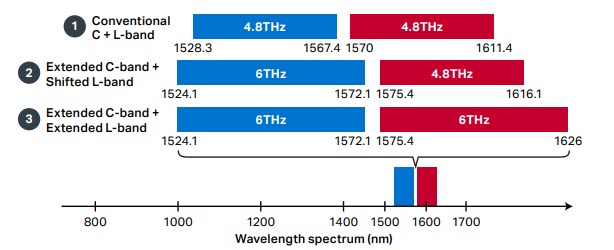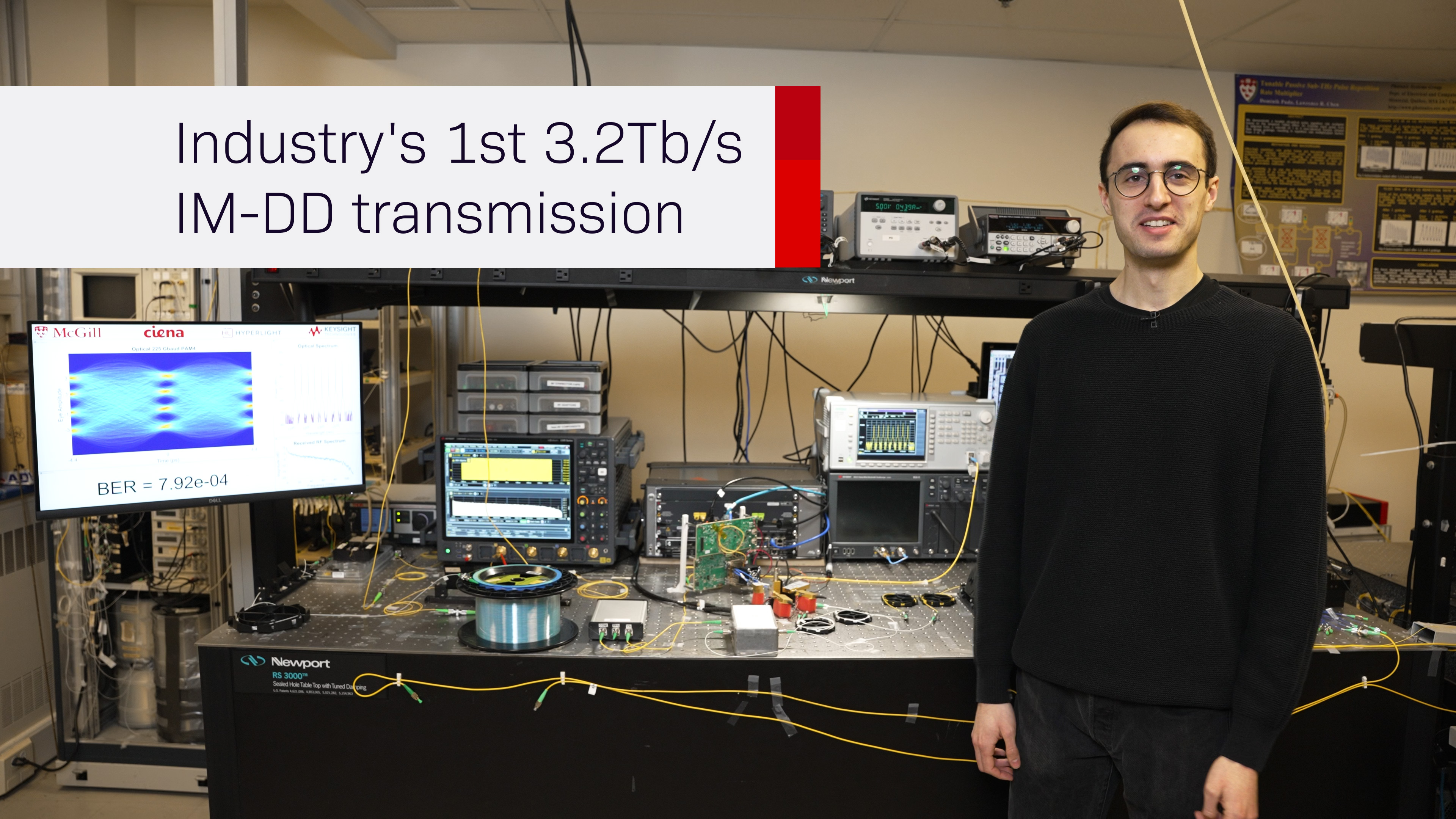Battle of the bands. Get more fiber capacity using more spectrum.
Is acquiring more fiber challenging and costly for your network, but you need to increase capacity between data centers? Deliver bandwidth-intensive content? Move business applications to the cloud?
We regularly talk to network operators about a solution to this problem: use more spectrum via the L-band to light more capacity in their existing networks. You might hear, more capacity with my existing fiber plant – and think “sign me up”. But before you get started, you need to be aware that there are three different L-band options possible, so different approaches to consider. Also, to determine the best L-band option you need to consider more than just performance – the component ecosystem and impacts on sustainability need to be looked at as well.
So, let’s look at each of the three options for deploying the L-band to light your spectrum more efficiently – and their impacts.
- Conventional 9.6THz C + L-band (4.8THz + 4.8THz): This is the baseline for comparison. As you can see in the chart below, the Conventional C + L band option provides 4.8 THz for both the C-band and the L-band for a total of 9.6THz of usable spectrum.
- 10.8THz C + L-band (6THz + 4.8THz): This Extended C-band plus Shifted L-band option opens 12.5% more spectrum but expands the width of the C-band into the Conventional L-band, and then shifts the L-band out to 1575.4nm.
- 12THz C + L-band (6THz + 6THz): This Extended C + Extended L-band option provides 25% more spectrum than the Conventional C + L-band for 12THz of usable spectrum but uses a wider 6THz L-band that extends out the farthest of the three options.

Options for increasing fiber capacity with L-band
With 25% more spectrum, the 12THz C + L-band should provide 25% additional capacity and be the obvious winner, right? Not so fast.
As the spectrum is widened, there is an increase in amplifier noise and an increase in average ripple, which results in performance penalties. As the noise increases at the far end of the spectrum, the coherent modems must operate at lower data rates, lowering the usable capacity in the L-band. Shifting the L-band or using an Extended 6THz L-band increases noise and ripple, resulting in degraded network performance, offsetting the extra spectrum that the 10.8THz and 12THz C + L-band options provide.

Real-world capacity gains for L-band options
The result? A declining return on your investment. Based on the modelling of a Tier 1 service provider backbone network, the 10.8THz C + L-band provides only 3% more lit capacity than the Conventional C + L-band solution, while requiring 12% additional coherent transceivers! A wider 6THz L-band would result in even larger performance impacts, further reducing the maximum achievable line rate, resulting in lower overall lit capacity gains with significant extra costs due to the additional transceivers required to offset the performance penalties.
How does the L-band ecosystem stack up?
The component ecosystem for the 6THz L-band is still emerging. Several of the elements required to deliver the 6THz L-band solution need improvement to achieve equivalent performance to the Conventional 9.6THz C + L-band solutions available today.
 While it is possible that future technology development may offset the performance impacts of the Extended 6THz L-band, it will require significant cost and development from an ecosystem of suppliers.
While it is possible that future technology development may offset the performance impacts of the Extended 6THz L-band, it will require significant cost and development from an ecosystem of suppliers.
How does L-band fit into sustainability and social responsibility initiatives?
Meeting environmental impact and ongoing sustainability goals have come to the forefront as energy costs soar and network providers work to become more socially responsible by reducing power consumption, decreasing reliance on fossil fuels, and lowering CO2 emissions. Let’s look at the sustainability implications of each of the L-band choices.
Networks built with 10.8THz C + L-band technology are less power efficient, requiring roughly 15% more power than Conventional C + L-band systems. The relationship between spectrum and power is nonlinear, so the additional power needed for the Extended 6THz L-band systems will be higher. While the wider L-band options offer more spectrum, it is at the expense of watts per bit, driving up power requirements and impacting ongoing sustainability efforts.
If your goal is to reduce environmental impacts while increasing capacity, the Conventional C + L-band approach requires less pump power, making it the most sustainable approach for deployment today.
The winner of the battle of the bands?
As you consider the options for increasing fiber capacity with L-band, it is important to look at the entire picture: performance, supplier ecosystem, and environmental impact of each technology when making a choice. Today, the argument for 10.8THz and 12THz C + L-band is not strong enough to overcome the performance deficiencies, supply chain immaturity, and increased power penalties with these solutions. Future technology and ecosystem development are required before the Shifted/Extended L-band solutions are feasible from both an economic and environmental impact perspective.
The optical networking industry moved in the direction of 4.8THz for C-band years ago, and 4.8THz for L-band is the most efficient way forward today. Deploying this Conventional 9.6THz C + L-band solution doubles fiber capacity compared to C-band alone, and it provides the best performance across all channels while leveraging parts that are manufactured in high volume to deliver supply and cost benefits.






